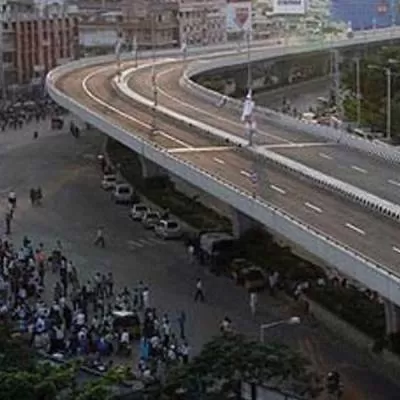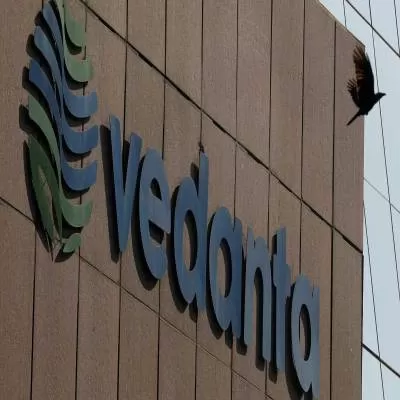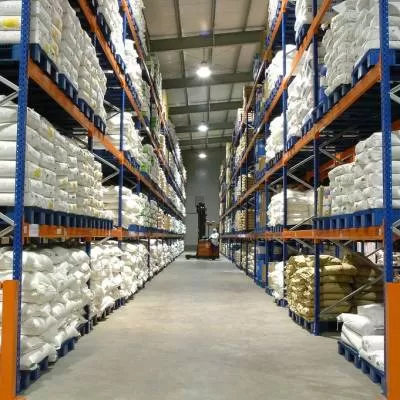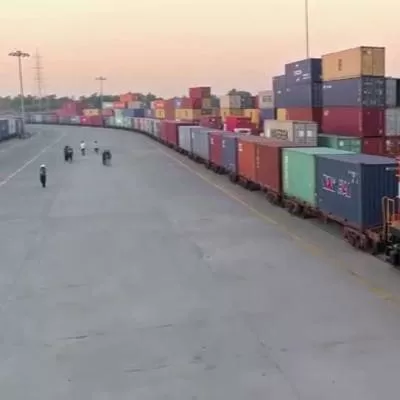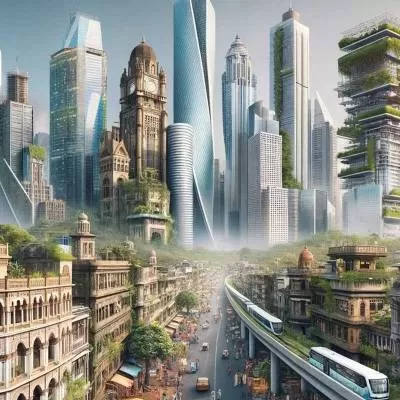- Home
- Infrastructure Urban
- WAREHOUSING & LOGISTICS
- Rs 500 billion is expected to flow in for the creation of warehousing facilities in India between 2018-2020. CW explores demand drivers, design specifications, role of IT, and more...

Rs 500 billion is expected to flow in for the creation of warehousing facilities in India between 2018-2020. CW explores demand drivers, design specifications, role of IT, and more...
- GST
- Chandranath Dey
- JLL India
- Dr Samantak Das
- Knight Frank (India)
- DMIC
- Jasmine Singh
- CBRE
- Sudeep Mehrotra
- Alvarez & Marsal
- Manish Saigal
- LSP
- RFID
- Internet of Things
- IT solutions
- FIFO
- E-commerce
- JLL India
- Chandranath Dey
- Senior Vice President & Head -Industrial Consulting Services
- JLL India
- Chandranath Dey
- IIFCL
- Make in India
- Digital India
Sometimes numbers speak louder than words: India is reportedly set to witness investments close to Rs 500 billion for the creation of warehousing facilities between 2018 and 2020. What is driving these investments?<br /> <br /> "First is the implementation of GST," responds <span style="font-weight: bold;">Chandranath Dey, Senior Vice President & Head-Industrial Consulting Services, JLL India.</span> This has made way for the efficient "hub-and-spoke" model of warehousing and shifted end-user demand and developer supply from inefficient, low-quality redundant warehouses to large box, good-quality Grade-A warehouses. "Second, the rapid growth of e-commerce, allowance of FDI in single-brand retail and a boost in manufacturing investments owing to Make in India," he adds.<br /> <br /> <span style="font-weight: bold;">Dr Samantak Das, Chief Economist & National Director-Research, Knight Frank (India), </span>also believes GST has created a conducive environment for global players to foray into the Indian warehousing sector. <br /> <br /> "We foresee many changes in compliance and quality," he shares. "We are also observing consolidation of warehouses in various sectors, resulting in larger and fewer warehouses with economies of scale. Also, location is now based on business economics and not tax avoidance."<br /> <br /> This apart, the Centre's focus on development of logistics parks and industrial corridors like the Delhi-Mumbai Industrial Corridor (DMIC) are further driving investment.<br /> <br /> Meanwhile,<span style="font-weight: bold;"> Jasmine Singh, Head-Industrial and Logistics Services India, CBRE</span>, clarifies that Rs 500 billion is what large developers and pension funds are committing to the Indian logistics scenario. This is also a combination of investments connected to the e-commerce sector. So, Rs 500 billion is not what somebody is going to run into the entity; it will be the result of the entire phase of GST upgradation, modernisation and expansion of e-commerce to Tier-II and Tier-III cities.<br /> <br /> Indeed, much of the growth has come from the e-commerce sector; in 2016 and 2017, the sector absorbed most large areas in the country. And, this trend is seen continuing at an even larger scale. Initially, Amazon and Flipkart did not have more than 100,000 sq ft in Kolkata. But now, sources reveal that each will add close to another 4-5 million sq ft of the 25 million sq ft that can be absorbed this year. Singh says that large automotive manufactures are moving through this upgradation cycle as well. Further, fashion retailers form a large chunk of the takeoff in the past six months and are likely to go up in the next six months too. <br /> <br /> <span style="font-weight: bold;">Cost to build</span><br /> The cost of building a facility depends upon the type of grade - A, B or C - and the specifications for the warehouse.<br /> According to Dey, a Grade-A warehouse typically costs Rs 1,500 per sq ft depending on the specifications, including clear height of 9-13 m with allowable floor load of 8-10 tonne per sq m. And a Grade-B warehouse will cost around Rs 1,000 per sq ft as the height stands at only 7-8 m with the floor strength of 5-7 tonne per sq m. A major component during design is fire safety. In the case of Grade-A, this includes sprinklers and a fire hydrant; for Grade-B, this is not mandatory.<br /> <br /> <span style="font-weight: bold;">In demand</span><br /> In the past five to seven years, both warehousing demand and supply have changed significantly.<br /> <br /> "Client profiles have changed significantly in the past two decades in terms of numbers and warehousing requirements," says <span style="font-weight: bold;">Sudeep Mehrotra, Senior Director-Corporate Solutions, Alvarez & Marsal.</span> "Clients now are looking at warehousing beyond storage that is sophisticated enough for more activities."<br /> <br /> <span style="font-weight: bold;">After GST, this has become even more apparent. </span><br /> In the view of<span style="font-weight: bold;"> Manish Saigal, Managing Director-Corporate Solutions,</span> Alvarez & Marsal, key changes include increase in kinds of activities now outsourced to the warehouse and hence the need for quality infrastructure; velocity of cargo movement and desire to minimise inventory resulting in faster turnaround requirement within warehouses; and compliance standards related to building structures increasing significantly to reduce cost of exception and incidents.<br /> <br /> Operators have also become more savvy to meet changing demand. "Operators now have access to modern infrastructure," says Mehrotra. "This allows them to enhance their capabilities to offer value-added services and multi-user solutions, resulting in requirement of bigger scale of warehouses."<br /> <br /> <span style="font-weight: bold;">Application of IT</span><br /> IT applications play a significant role in the planning and operations of warehouses.<br /> New technologies and the Digital India initiative have led to large-scale innovations in supply chain management, increasing the effectiveness of the sector on the whole.<br /> "Logistic service providers, commonly known as LSPs, use big-data analytics and cloud-based applications to track shipments and fulfil the consignment better and easier," says Dey. "Advancement in technologies and infrastructure, along with the government's support through policy initiatives, will further improve the logistics industry." <br /> <br /> Tracking shipments with RFID, GPS, and other connected sensors is making shipping more efficient and automated. "By keeping an eye on shipments, logistics businesses along the supply chain can make better decisions about routing, staffing and warehousing," he adds. This will improve planning and reduce costs.<br /> <br /> Dr Das points out to the Internet of Things (IoT), cloud computing, big-data analytics, robotics and automation as recent technological trends. "These applications help increase the efficiency of warehousing activities," he says. "For instance, robots can be programmed to perform tasks such as picking, packing and sorting or assist in loading and unloading of goods." For instance, Wipro's Insta Intelligence tool, which helps automate logistics processes, is an example of the application of big-data analytics.<br /> <br /> According to Saigal, IT solutions are improving the put-away and pick-up process and reduce cost of handling. "This includes systems that allow cargo tracking, FIFO compliance, kitting, sorting, etc. <br /> IT is also used for inventory planning by integrating sales modules of customers as well as demand planning and requisition management by integrating procurement and planning."<br /> That said, the Indian warehousing sector is still at a nascent stage of adoption of such technology.<br /> <br /> <span style="font-weight: bold;">Favourable warehousing locations</span><br /> Several cities - metro and non-metro - have emerged as among the most favourable warehousing locations in the country.<br /> <br /> Dey lists Mumbai, Chennai, Delhi, Kolkata, Hyderabad, Bengaluru, Pune and Ahmedabad as the eight metros that top the list. And according to a JLL study estimating the potential of various locations as strong warehousing nodes (aside the metropolitan and Tier-I locations), the most favourable warehousing spoke locations are Surat, Kanpur and Lucknow, Ranchi, Madurai, Coimbatore, Ludhiana and Ambala, Tiruchirapalli, Nasik, Madurai and Jaipur. "Among the Tier-II cities, these have shown strong growth characteristics that will allow them to emerge as warehousing hubs in a hub-and-spoke model,' he says. "These are strategically located in proximity to major markets and allow transportation to their feeder locations in less than six hours."<br /> <br /> As per his study, Dr Das identifies Ahmedabad, Bengaluru, Chennai, Hyderabad, Mumbai, NCR and Pune as prominent cities where different warehousing hubs have come up and with scope for future growth.<br /> <br /> Meanwhile, Singh points to Bhiwandi in Mumbai as the largest warehousing market for some time to come; the reason is that it is closer to JNPT. <br /> <br /> Till the time the shipping scenario changes, Mumbai will be bigger than Delhi and Chennai together," he reasons. "NCR also continues to be a large market as it is a gateway to the north. Then, Chennai, considering its proximity to the port, followed by Bengaluru, Hyderabad and Kolkata. We also see warehouses coming up in Bhubaneswar and Patna. The area between Ludhiana and Chandigarh is likely to come up as a future market to serve the whole of Jammu and Kashmir, Himachal Pradesh and Punjab. So there is scope for consolidation."<br /> <br /> <span style="font-weight: bold;">E-commerce facilitating growth</span><br /> The overall growth in e-commerce and a shortening turnaround time for delivery has necessitated a sharp growth in warehousing.<br /> <br /> "E-commerce companies have taken over the markets and are eventually serving every city," says Dey. "Their ability of last-mile delivery and Internet connectivity has led them to accelerate their growth and impelled the development of warehouses in various locations in the country."<br /> <br /> According to Dr Das, "The pressure on logistics services has increased exponentially over the past five years, as the volume of packages has grown multi-fold in tandem with a constant reduction of package sizes." He adds that e-tail warehousing requirements are expanding the market in terms of space and service standards and helping it evolve into a mature market through high quality specification. For example, e-tail occupiers prefer vertical storage density, warehouses with a higher clear height of 40-50 ft.<br /> <br /> The rapid growth of the e-commerce sector is only here to stay as global giants like Amazon and Walmart (following its recent deal with Flipkart) continue to invest in India.<br /> <br /> <span style="font-weight: bold;">What's next?</span><br /> Apart from e-commerce, Dey adds, "The next big sector of space is the 3PL or third-party logistics that command significant warehousing spaces in urban and semi-urban locations." These are sectors that, despite their incremental requirements in warehousing, are averse to owning the requisite place.<br /> <br /> For his part, Singh is confident that retail will continue to be the next best sector from a fresh acquisition perspective. "But if you look at the humungous time FMCG companies and automotive companies or automotive ancillaries have, if they come up with a consolidation and relocation plan, it would probably take as much place as an e-commerce company."<br /> <br /> <span style="font-weight: bold;">Government Moves</span><br /> India is gradually improving its positioning as seen in the Logistics Performance Index (LPI), where its rank jumped by an impressive 19 positions to reach 35. <span style="font-weight: bold;">Chandranath Dey, Senior Vice President & Head -Industrial Consulting Services, JLL India, </span>elaborates upon government initiatives influencing growth:<br /> <br /> Policy-level changes - Infrastructure status: The logistics sector is to get credit on a long-term basis at competitive rates from financial institutions and access to funds as ECBs and long-tenure funds from insurance and pension funds, and the ability to borrow from IIFCL.<br /> <br /> Implementation of GST has made way for the cost and operationally-efficient hub-and-spoke model of warehouses. <br /> <br /> GST has helped save cost and time across the supply chain. It has also accelerated the amalgamation of warehouses, helping to formalise the largely unorganised sector.<br /> <br /> Make in India has resulted in a boost in manufacturing output.<br /> <br /> New technologies and Digital India have led to large-scale innovations in supply chain management.<br />


